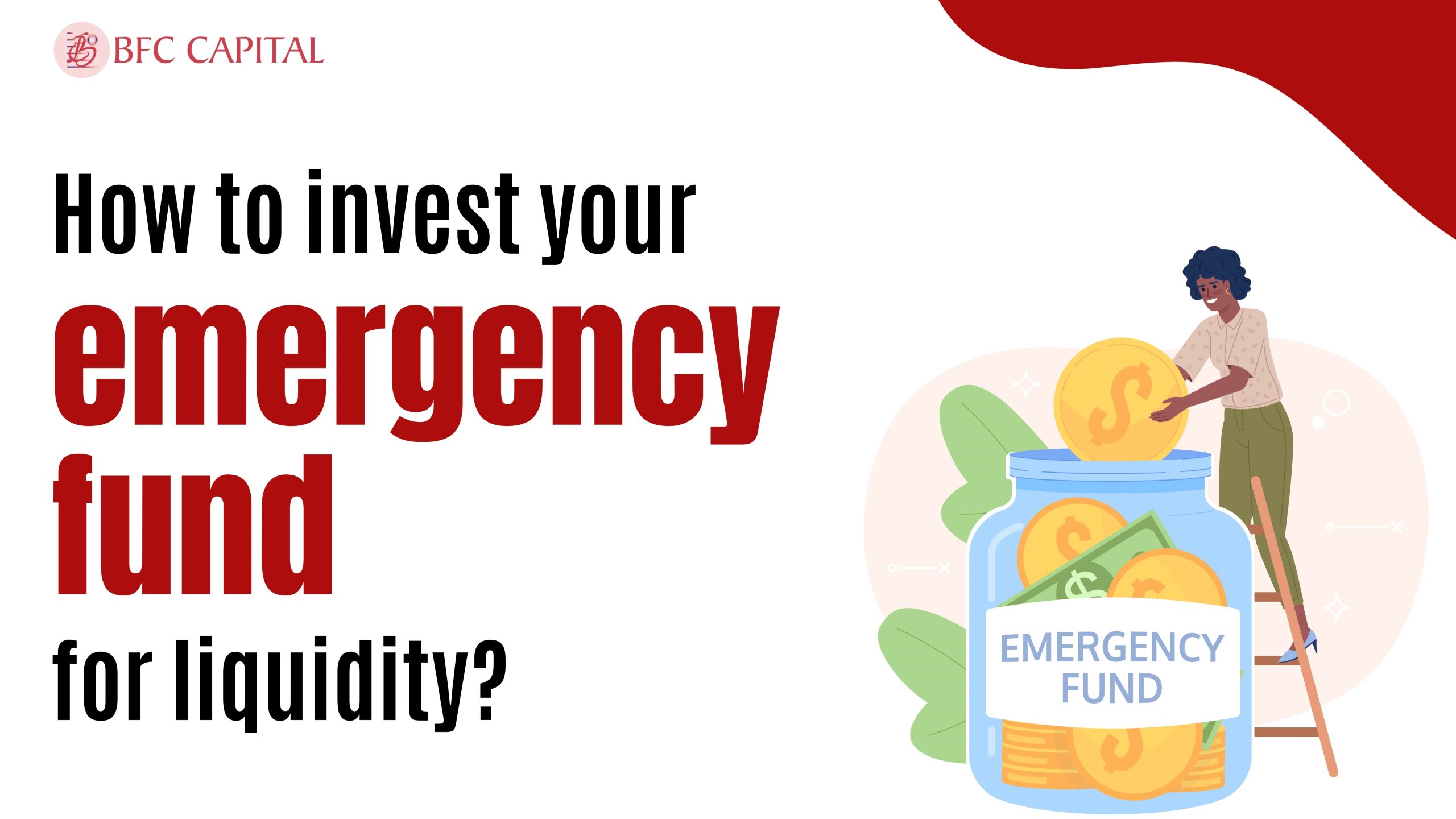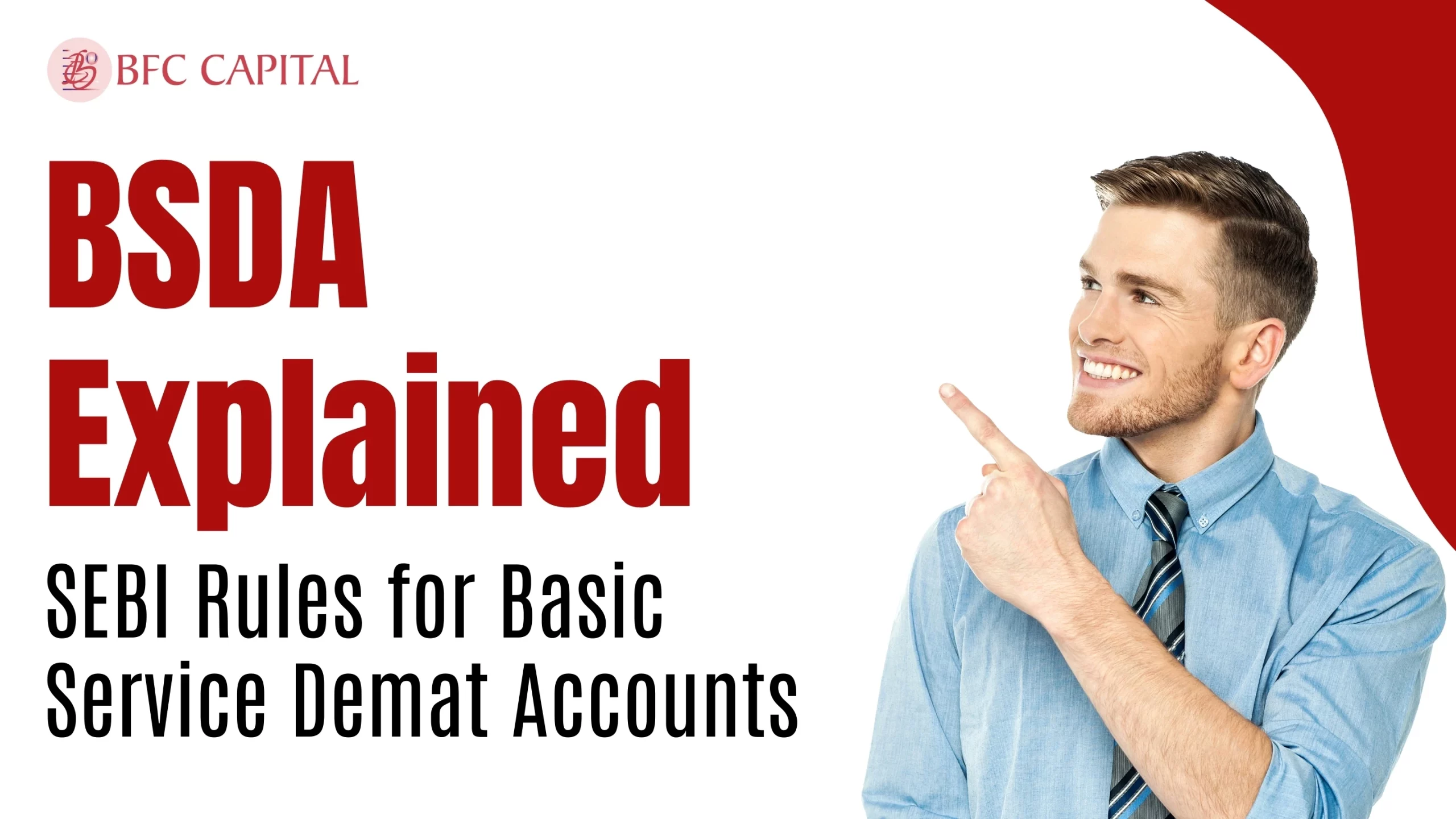
Picture yourself getting ready to journey to a nearby hill station by car. The thought gives you a feeling of excitement and adventure running through you. However, there is a hint of doubt hidden beneath the thrill. Can you rely on the sunshine in the forecast, or should you expect sudden downpours? What will be the level of traffic on those twisting mountain roads? Similar to any journey, a level of risk is associated with investing in mutual funds. There is a chance for calm waters and consistent profits, but also the possibility of encountering unexpected bumps and market downturns.
The good news? In contrast to a road trip full of unexpected twists, mutual funds allow you to assess the risk in advance. This article will provide you with the resources to become your own investment weather predictor. We will explore various methods to assess the potential obstacles you could encounter on your investment path. By comprehending these risk metrics, you can select mutual funds that match your risk tolerance accurately. Therefore, fasten your seatbelt and prepare to confidently navigate the world of investing!
You will be ready for any unforeseen challenges the market presents.
Ways to measure risk in Mutual Funds:
Beta
Beta is a frequently utilized risk metric that evaluates the comparative instability of a Mutual Fund’s returns compared to its benchmark. Beta only serves to indicate the level of risk compared to other assets, not the actual risk of the asset.
Consider the stock market as the standard, having a Beta of 1. This serves as your benchmark for volatility. Next, we will observe how Beta can affect potential fluctuations in your investment path:
Beta below 1: If a mutual fund’s Beta is below 1, let’s say, 0.8, it indicates that the fund is expected to have lower volatility compared to the market. It indicates an easier and smoother journey. Although the market may be rather volatile, this fund may have more mild fluctuations in price and is therefore more reliable as an investment.
Beta Greater Than 1: If a Mutual Fund’s Beta is higher than 1, let’s say 1.3, it suggests that the fund is expected to have greater volatility compared to the market.Expect greater volatility – The price of the fund may be more volatile and can rise or fall more steeply than general market trends.
Remember that Beta looks at the fund’s relative volatility, not the overall risk. Thus, even though high Beta Fund comes with a high volatility, if you have higher tolerance level and you are searching for high returns, you should still consider it.
Since the whole concept is a bit complex let us illustrate how it works with an example. Beta is like the degree of difficulty as presented on the hiking trail map. A Beta of 1 implies that it is equivalent to taking a stroll through a park, while a Beta of 1. 5 could even be a steep hill to climb. Each option has its given level of risks, yet the Beta rating helps to select the correct approach to investment appealing to your experience and tolerance levels.
ALPHA
Suppose you’re following a recipe from a cookbook to bake a delicious cake. The recipe is like a benchmark index for mutual funds, which sets a baseline for what’s expected. However, some bakers might add a secret ingredient or use a unique technique to create an even tastier cake. That secret touch is like Alpha in the world of mutual funds.
Alpha goes beyond just comparing a fund’s performance to the market, as done by Beta. It dives more profoundly to see if the fund has delivered extra returns on top of what was expected based on its risk level which is measured by Beta metric and chosen benchmark.
Here’s how it works:
Positive Alpha: – A positive Alpha (say, +2%) means the fund outperformed its benchmark by 2%. This suggests the fund manager might have some secret baking skills (or investing techniques!) that helped them generate those extra returns. It’s a good sign, especially for actively managed funds where managers try to beat the market.
Negative Alpha: – A negative Alpha (say, -1%) means the fund fell short of its benchmark by 1%. This could indicate the manager’s strategy didn’t quite work out, or they simply followed the recipe a bit too closely.
It’s important to remember: Alpha is based on past performance, not a guarantee of future success. Just like a baker might have an off day, a fund with a positive Alpha in the past might not always outperform in the future.
The Takeaway: Alpha is a Piece of the Puzzle
While Alpha isn’t a direct risk measure, it helps you understand a fund’s performance potential relative to its benchmark. When combined with Beta (volatility), you get a clearer picture of how a fund might behave. Look out for future posts where we explore more ways to assess risk and navigate the investment landscape with confidence!
R-Squared
Remember the secret ingredient in the Alpha example, the one that made the cake extra delicious? R-squared is like another baking concept in the world of mutual funds – it tells you how closely a fund follows its benchmark index, kind of like a family’s classic cake recipe.
Here’s the idea: A benchmark index is like a standard cake recipe everyone uses as a starting point. But some families might have their own secret touches or special techniques that make their cake stand out. R-squared measures how similar a fund’s performance is to its benchmark. It ranges from 0 to 100, with 100 meaning the fund’s returns perfectly mirror the benchmark.
Let’s bake some investment knowledge:
High R-Squared : An R square that’s equal to 100 means perfectly mirrors the benchmark, whereas an R square of 70 can be high in comparison to an R square of 50. This is often the case for index funds that passively follow the market recipe. It’s a reliable approach, but just like grandma’s cake, it might not be the most exciting (investment-wise).
Low R-Squared : An R square of 30 against a fund of R square 60 is low. and it relatively fails to mimic the benchmark. This could be a sign of a more actively managed fund where the manager is like a creative baker, adding their own twist to the recipe. They might use different ingredients or techniques, potentially leading to a tastier (higher return) cake, but also a risk of it burning (experiencing losses). This lower R-squared might also suggest the fund focuses on a completely different type of dessert (asset class), adding variety to your overall portfolio (dessert buffet!).
Remember: Just like with cake, there’s no single “best” R-squared score. It depends on your taste (investment goals). If you want a reliable, familiar cake (low-cost, market-tracking fund), a high R-squared option might be perfect. But if you’re adventurous and open to a potentially more exciting (and risky) flavor, a lower R-squared fund could be a tempting choice.
The Takeaway: R-Squared is One Ingredient in Your Investment Recipe
Comparing it to Beta and Alpha, conversely, R-squared will assist you in effectively identifying which mutual fund is optimal for your unique risk preference and financial objectives. A high R-squared is similar to a familiar culinary recipe that can guarantee a good meal every time, while low R-squared is like trying a new dish, which although it has not been tested, might yield high returns or losses. Consider all the ingredients before picking your investment cake!
Standard Deviation
Imagine you’re on a road trip with friends. Some road trips are smooth sailing, with clear skies and gentle curves. Others might be a wild ride, with unexpected twists, turns, and maybe even a pothole or two. Standard Deviation in mutual funds works in a similar way. It measures the bumpiness of a fund’s returns over time, kind of like how smooth or bumpy your road trip might be.
Standard Deviation is a number, usually shown as a percentage. Here’s how it translates to your investment journey:
High Standard Deviation (Over 15%): Buckle Up! – A high Standard Deviation (say, 20%) suggests the fund’s returns can swing dramatically, both upwards and downwards, compared to its average return. This means your investment value might experience significant bumps along the way. This type of fund might be suitable for risk-tolerant investors who are comfortable with more volatility in exchange for the potential for higher returns.
Low Standard Deviation (Less Than 10%): A Smoother Ride – A low Standard Deviation (say, 5%) suggests the fund’s returns tend to stay closer to its average return. This means your investment value might experience fewer ups and downs, offering a smoother ride. This type of fund might be a good fit for risk-averse investors who prioritize stability over potentially higher returns.
Important Note: Standard Deviation doesn’t tell you the direction of the bumps, just how big they might be. The fund’s returns could still be positive or negative, but a high Standard Deviation suggests they’ll fluctuate more widely.
For example: Let’s say Mutual Fund XYZ has an average return of 12% and a Standard deviation of 20%. The average return would hence have fluctuated between 32% to -8%. This is a high SD in comparison to a SD of 4% and depicts volatility. A SD of 4% will in-turn be having returns from 16% to 8% for the same MF depicting stable returns.
The Takeaway: Standard Deviation is Your Investment Weather Forecast
Combining both Standard Deviation and Beta coupled with understanding of Alpha would give one a mapped frame work for one’s investment process. It lets you know how much you can afford to lose or the level of churn you are willing to stomach and allows you to pick mutual funds accordingly. A high Standard Deviation means a wilder path of profits and losses and a low Standard Deviation points to a relatively smooth returns railroad. Based on all these factors, you can confidently invest in the investment of your choice!
Sharpe Ratio
Imagine you’re on a bumpy road trip (remember Standard Deviation?) and you hit a giant pothole, damaging your car. That pothole represents the risk you take when investing in a mutual fund. But unlike a pothole that just costs money, some risks can potentially bring rewards. The Sharpe Ratio helps you understand if the extra “bumps” (risks) you’re taking with a fund are actually worth it for the potential rewards (returns).
Here’s how it works:
The Math Behind the Magic: The Sharpe Ratio takes a fund’s average return, subtracts the risk-free rate of return (think of this as guaranteed, low-risk savings account interest), and then divide that number by the fund’s Standard Deviation (remember, the bumpiness of the ride).
Sharpe Ratio Scores: A higher Sharpe Ratio indicates that the excess returns are higher relative to the amount of risk taken. It implies that high portfolio returns are a result of sound decisions on where to invest and not reckless risk taking (like that enormous hole in the road!).
Making Sense of the Score:
High Sharpe Ratio (Over 1): This implies that the fund earning a good return relative to the amount of risk being incurred.
Low Sharpe Ratio (Less Than 1): This might indicate the fund’s returns aren’t that much higher than a risk-free option, even though it’s taking on more risk. You might be getting jostled around for not much extra gain.
The Takeaway: Sharpe Ratio is Your Reward-to-Risk Compass
The Sharpe Ratio together with Beta, Alpha, and Standard Deviation guides you in investment analysis. This enables you to determine whether the higher risk of a particular fund (measured by its high volatility) is worth the extra returns that the fund could provide. By doing so, you can get yourself some mutual funds that are bound to suit your risk tolerance level and reward expectation!
Sortino Ratio
Imagine you’re on another road trip (remember Standard Deviation?), but this time, you only care about the truly nasty potholes that could damage your car. The Sharpe Ratio considers all the bumps, even the small ones. But the Sortino Ratio is like a special GPS for risk-averse investors: it only focuses on the big, damaging potholes, the ones that represent potential losses in your mutual fund.
Here’s the key difference:
Sharpe Ratio: Looks at ALL the bumps (both up and down) compared to the risk-free return (like your safe savings account).
Sortino Ratio: ONLY looks at the REALLY bad bumps (downward swings) compared to the risk-free return.
Why does this matter? Because some investors are more worried about downside risk (losing money) than overall volatility. The Sortino Ratio helps them see if a fund is good at avoiding those big drops.
Understanding the Score:
High Sortino Ratio (Over 1): This suggests the fund is good at avoiding major losses, even if it experiences some ups and downs. You’re getting a smoother ride with a lower chance of getting slammed by a giant pothole!
Low Sortino Ratio (Less Than 1): This might indicate the fund is more prone to those big, damaging dips, even if it also experiences some upward bumps. You might be taking on more risk of significant losses for potentially not much extra return.
Important Note: Just like the Sharpe Ratio, the Sortino Ratio is a helpful tool, but it’s not perfect. Past performance isn’t a guarantee of future results, and other risk factors still exist.
The Takeaway: Sortino Ratio is Your Negative Return Compass
With the Sortino Ratio and the Beta, Alpha, Standard Deviation, and Sharpe Ratio, you are ready to take on the investment world. It lets you know whether a fund has the ability to avoid that big jump (loss) that risk-averse investors worry most about. With all these parameters in mind, it is possible to invest in mutual funds suited for your risk capacity and your investment objective!
Conclusion
In conclusion, choosing mutual funds isn’t a one-size-fits-all proposition. It’s more like picking the perfect teammate for a game of financial frisbee! If you’re cautious and prefer to play catch in the park (low risk, predictable returns), focus on funds with a low Beta and a high Sortino Ratio. These are your reliable teammates who prioritize a smooth game with minimal fumbles (losses).
On the other hand, if you’re up for some trick throws and fancy footwork (potentially higher returns with more risk), then set your sights on funds with a high Alpha and Sharpe Ratio. These are the daring teammates who might occasionally miss a throw (experience losses) but also have a knack for impressive catches (generating returns) through skillful play (smart investment decisions).
Remember, the key is to choose mutual funds that complement your own risk tolerance and investment goals. By understanding these risk measures, you can assemble the perfect financial frisbee team, ready to play a winning game and reach your long-term financial objectives!
Remember, no single measure provides a complete picture. It is the combination of these metrics that will offer a comprehensive view of the fund’s risk profile and potential performance.
Please share your thoughts on this post by leaving a reply in the comments section.
Also, check out our recent post on: “What is Annuity? – Meaning, Definition, and Types“
To learn more about mutual funds, contact us via Phone, WhatsApp, Email, or visit our Website. Additionally, you can download the Prodigy Pro app to start investing today!







